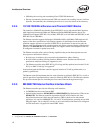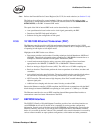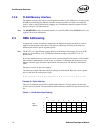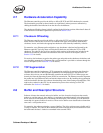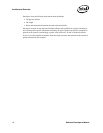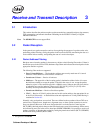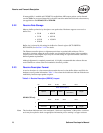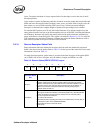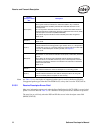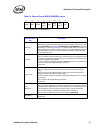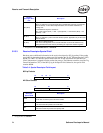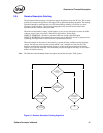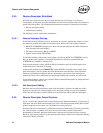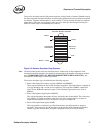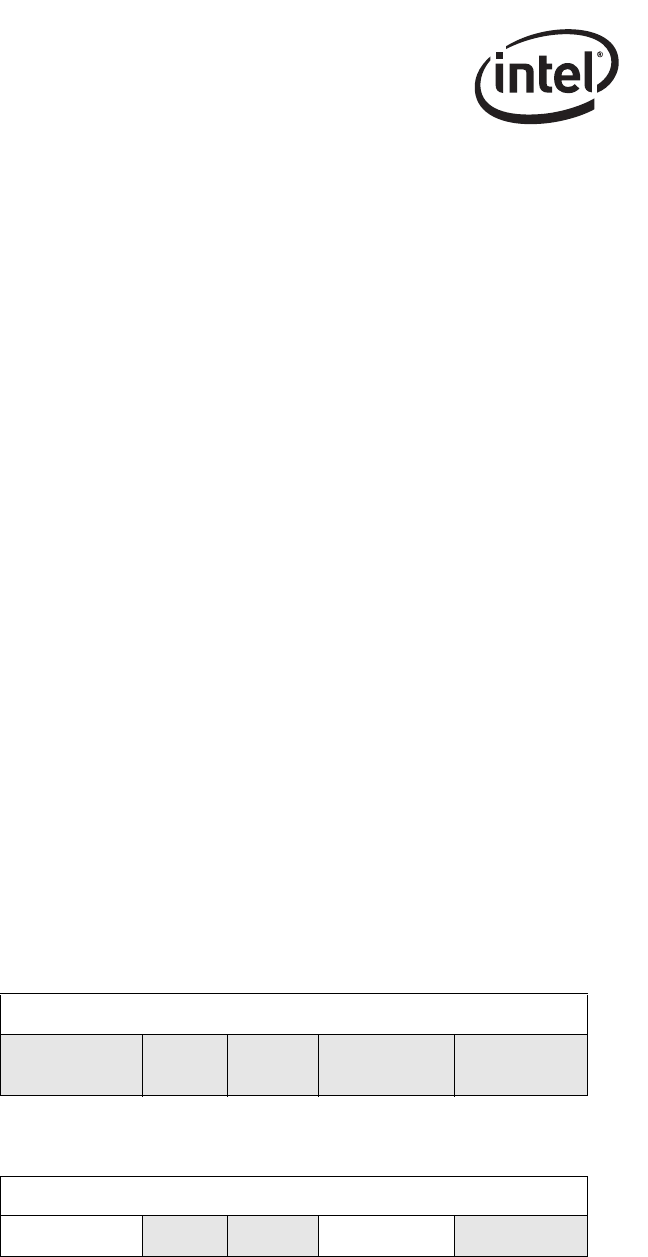
Receive and Transmit Description
20 Software Developer’s Manual
If manageability is enabled and if RCMCP is enabled then ARP request packets can be directed
over the SMBus or processed internally by the ASF controller rather than delivered to host memory
(not applicable to the 82544GC/EI or 82541ER.
3.2.2 Receive Data Storage
Memory buffers pointed to by descriptors store packet data. Hardware supports seven receive
buffer sizes:
Buffer size is selected by bit settings in the Receive Control register (RCTL.BSIZE &
RCTL.BSEX). See Section 13.4.22 for details.
The Ethernet controller places no alignment restrictions on packet buffer addresses. This is
desirable in situations where the receive buffer was allocated by higher layers in the networking
software stack, as these higher layers may have no knowledge of a specific Ethernet controller’s
buffer alignment requirements.
Although alignment is completely unrestricted, it is highly recommended that software allocate
receive buffers on at least cache-line boundaries whenever possible.
3.2.3 Receive Descriptor Format
A receive descriptor is a data structure that contains the receive data buffer address and fields for
hardware to store packet information. Table 3-1 lists where the shaded areas indicate fields that are
modified by hardware upon packet reception.
Table 3-1. Receive Descriptor (RDESC) Layout
82544GC/EI only
Note: The checksum indicated here is the unadjusted “16 bit ones complement” of the packet. A software
assist may be required to back out appropriate information prior to sending it to upper software
• 256 B • 4096 B
• 512 B • 8192 B
• 1024 B • 16384 B
• 2048 B
63 48 47 40 39 32 31 16 15 0
0 Buffer Address [63:0]
8
Special Errors Status
Packet Checksum
(See Note)
Length
63 48 47 40 39 32 31 16 15 0
0 Buffer Address [63:0]
8 Reserved
Errors Status Reserved Length



